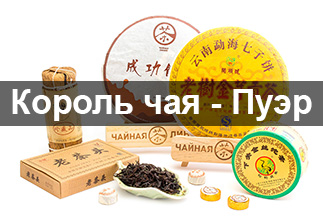Sheng Puer "Tea Line": Living Elixir from the Depths of Centuries
Sheng puer is a living tea that only gets better with age. Each year of storage reveals new facets of taste and aroma. Loose organic sheng puer from "Tea Line", collected in the heart of the tea world - Yunnan Province, Menghai County - is a real gift for connoisseurs.
What is Sheng Puer?
Sheng Puer is a unique type of tea that undergoes natural fermentation. The leaves are picked, twisted and dried, after which they begin to slowly “breathe”, oxidize and transform. This process can last for years, and all this time the tea continues to evolve.
Why Menhai?
Menghai County is a historical center of Puer production. Favorable climate, rich soils and centuries-old traditions of tea production make this region special. Tea trees growing here absorb the energy of the earth and sun, creating tea with a unique taste.
Organic and quality
Organic sheng puer from "Tea Line" is a guarantee of quality and safety. Tea leaves are grown without the use of chemical fertilizers and pesticides, which allows preserving the natural purity and richness of taste.
Taste and aroma
The taste of sheng puer is difficult to describe in words. It is multifaceted and constantly changes with each new brewing. You can feel notes of freshness, sweetness, light bitterness and even fruity shades in it. The aroma of tea is rich and deep, with woody and floral notes.
Health benefits
Sheng puer is not only a tasty but also a healthy drink. It:
- Improves digestion: Promotes normal functioning of the gastrointestinal tract.
- Strengthens the immune system: Due to the high content of antioxidants, it increases the body's defenses.
- Lowers Cholesterol Levels: Helps maintain cardiovascular health.
- Tones the body: Invigorates and increases efficiency.
How to brew?
To enjoy all the nuances of taste and aroma of sheng puer, it is recommended to use the traditional Chinese brewing method. For this, you will need a gaiwan or a small teapot made of Yixing clay.
- Warming up the utensils: Before brewing, the teapot or gaiwan must be warmed up with boiling water.
- Filling the tea: For one teaspoon of tea, 150-200 ml of water is enough.
- Water temperature: The optimal water temperature for brewing sheng puerh is 95-100 degrees.
- Brewing time: The first brewing should be short (5-10 seconds), subsequent brewings can be increased to 30 seconds or more.
- Number of brews: Sheng puer can be brewed multiple times, and the taste and aroma of the tea will change with each new brew.
Sheng puer from "Chaynaya Liniya" is not just tea, it is a philosophy of life. Every sip of this drink is a journey into the world of harmony and tranquility. Try it and see for yourself!
|
Country
|
China |
|
Provinces
|
Yunnan (云南) |
|
Manufacturer
|
Чайная Линия |
|
Declared weight, g
|
50 |
- Комментарии
- Вконтакте
Pu-erh is one of the most unique types of tea, which only gets better with age. Many people, when they first encounter this tea, wondered: why is pu-erh more often found in pressed form (cakes, bricks, tochas), and not in loose form? The reasons for this are related to both history and the practical aspects of storing and fermenting tea. Despite modern technologies that allow the production of loose pu-erh, the shape of pressed cakes remains unchanged. And pu-erh is more often found on sale in pressed form, for example, in the form of cakes or bricks, and loose pu-erh is less common. We will talk about the reasons for pressing pu-erh into cakes in this article.
Puer is a unique Chinese tea that is distinguished by its depth of taste, complexity of aromas and versatility of aftertaste. Its taste characteristics are formed under the influence of many factors, from growing conditions to the brewing method. Let's look at the main ones.
Over time, some consumers who are part of the country's "tea elite" discover mainland Chinese tea. And only a few get acquainted with Taiwanese varieties. The path of a tea person is usually long and thorny, but ultimately it leads to the King of Teas - puer. But not everyone is able to go all the way from ordinary teas to puer and appreciate its qualities.
The tea ceremony occupies a special place in the centuries-old Eastern tradition. And although the essence of this phenomenon remains constant, the nature and external manifestations of the tea ceremony in different nations have their own national characteristics. In each Chinese province, the tea ceremony and the tea used in it are varied: for example, residents of the southern provinces prefer green tea, and residents of the northern provinces - red tea, in Fujian province they more often use Oolong tea, and in Yunnan province Puer tea is widely known.



























































































